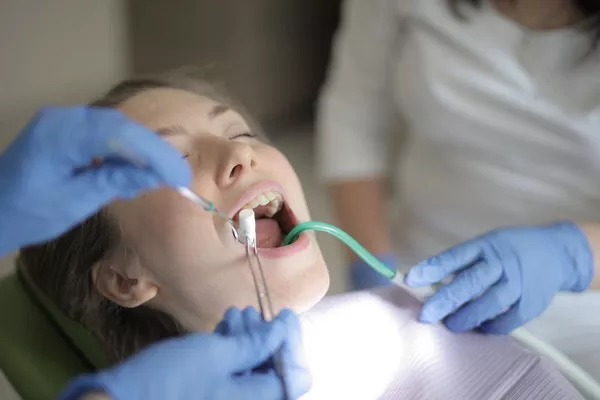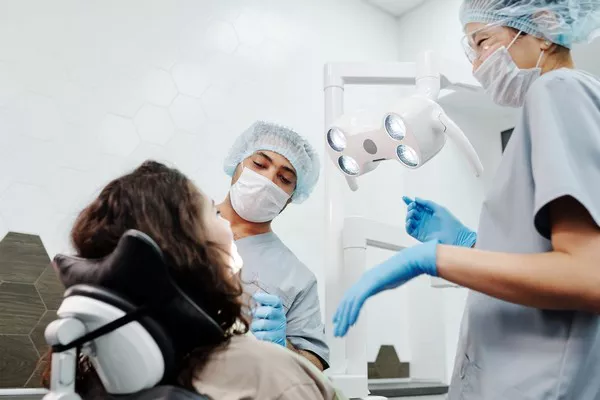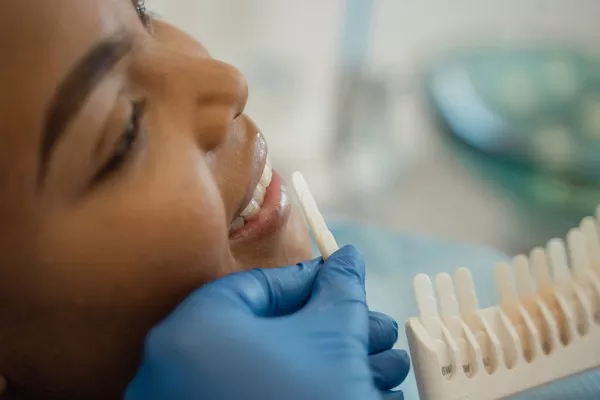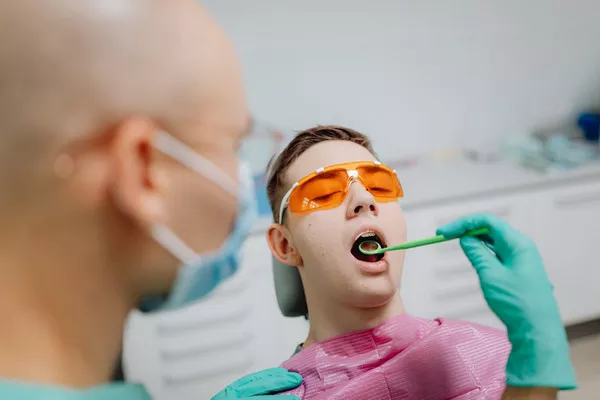Orthodontic treatment, particularly braces, can be a transformative experience for many individuals seeking to improve the alignment and appearance of their teeth. However, before embarking on this journey towards a straighter smile, it’s crucial to understand the preparatory steps involved. One common question that arises is whether orthodontists clean teeth before applying braces. In this article, we’ll delve into the importance of pre-braces consultations, the cleaning process, oral hygiene considerations, the braces procedure overview, post-procedure care, ongoing oral care with braces, and address common questions surrounding dental work and teeth whitening. Let’s explore each aspect in detail.
Pre-Braces Consultation
Before initiating any orthodontic treatment, it’s customary for patients to undergo a pre-braces consultation with their orthodontist. This consultation serves as a pivotal step in the treatment process, allowing the orthodontist to assess the patient’s dental health comprehensively. One crucial aspect of this consultation is ensuring that the teeth are thoroughly cleaned.
Importance of a Dental Checkup Before Getting Braces
A dental checkup before getting braces is imperative for several reasons. Firstly, it provides the orthodontist with a clear understanding of the patient’s oral health status. Any existing dental issues, such as cavities or gum disease, can significantly impact the success and progress of orthodontic treatment. By addressing these issues beforehand, the orthodontist can create a conducive environment for successful treatment outcomes.
Additionally, a thorough cleaning performed by the orthodontist or dental hygienist helps remove any plaque, tartar, or surface stains from the teeth. This step is crucial as it ensures that the surfaces where the braces will be attached are clean and free from any debris that could compromise the adhesive’s effectiveness.
Cleaning Process
The cleaning process performed by orthodontists before affixing braces involves meticulous attention to detail. Typically, this process begins with the removal of any plaque or tartar buildup using specialized dental instruments. Once the teeth are free from calculus deposits, they are polished using a polishing paste.
The polishing paste contains gentle abrasives that help smoothen the tooth surfaces, making them more conducive for adhesive attachment. This step not only enhances the bond between the braces and the teeth but also creates a clean canvas for optimal oral hygiene throughout the treatment period.
Oral Hygiene Pre-Braces
In addition to the cleaning process performed by the orthodontist, maintaining good oral hygiene before getting braces is paramount. Patients are encouraged to adhere to a thorough oral care routine, which includes brushing their teeth twice a day with fluoride toothpaste and flossing daily.
Brushing and flossing help remove plaque and food particles from the teeth and gums, reducing the risk of dental issues such as cavities and gum disease. By establishing good oral hygiene habits before the braces procedure, patients set themselves up for a smoother treatment journey with fewer complications.
see also: Unlocking the Cost of Dental Implants at ClearChoice
Procedure Overview
Once the teeth have been cleaned and the patient’s oral health status has been assessed, the braces application procedure can commence. This process typically begins with the application of adhesive to the teeth.
The orthodontist carefully places small brackets onto the surface of each tooth using the adhesive. These brackets serve as anchors for the wires that will guide the movement of the teeth during treatment. Once the brackets are in place, the orthodontist threads a flexible wire through them, securing it with small elastic bands or metal ligatures.
The wire exerts gentle pressure on the teeth, gradually guiding them into the desired position over time. Depending on the type of braces used, additional components such as rubber bands or springs may be incorporated to facilitate specific tooth movements.
Post-Procedure Care
After the braces application procedure, patients are provided with comprehensive instructions on post-procedure care. This typically includes guidance on dietary restrictions, oral hygiene practices, and managing any discomfort that may arise.
Eating Soft Foods and Managing Discomfort
In the initial days following the placement of braces, patients may experience some discomfort or soreness as their teeth adjust to the new appliances. To alleviate this discomfort, it’s advisable to consume soft foods that are easy to chew and won’t exert excessive pressure on the braces.
Additionally, over-the-counter pain medications such as ibuprofen or acetaminophen can be taken as needed to help manage any discomfort. It’s essential for patients to follow the recommended dosage instructions provided by their orthodontist or healthcare provider.
Tips for Maintaining Oral Hygiene
Maintaining good oral hygiene with braces requires diligence and attention to detail. While braces provide numerous benefits in terms of correcting dental issues, they can also create additional challenges when it comes to oral care.
Using a Water Pick
A water pick, also known as a water flosser, can be a valuable tool for individuals with braces. This device uses a stream of water to remove plaque and food debris from between the teeth and around the brackets and wires. Using a water pick in conjunction with regular flossing can help ensure thorough cleaning and reduce the risk of gum disease and tooth decay during orthodontic treatment.
see also: Mastering the Art of Applying Orthodontic Wax
Avoiding Sticky Foods
Sticky and hard foods should be avoided while wearing braces, as they can damage the brackets and wires or become lodged between the teeth, increasing the risk of decay. Instead, patients are encouraged to opt for softer foods that are less likely to cause problems or breakage.
Conclusion
Orthodontists do indeed clean teeth before applying braces, as part of the comprehensive pre-braces consultation process. This cleaning ensures that the teeth are free from plaque and tartar buildup, providing an optimal surface for braces attachment. Moreover, maintaining good oral hygiene before and during orthodontic treatment is essential for achieving successful outcomes. By following the guidance of their orthodontist and adhering to proper oral care practices, patients can enjoy a straighter, healthier smile for years to come.
FAQs About Preparing for Braces
1. What does the orthodontist do before you get your braces?
Before getting braces, your orthodontist will conduct a comprehensive examination of your teeth, jaws, and overall oral health. This may include taking X-rays, photographs, and dental impressions to create a personalized treatment plan. Your orthodontist will discuss treatment options with you, including the type of braces (traditional metal braces, ceramic braces, or clear aligners) and the duration of treatment. In some cases, additional dental procedures may be necessary before braces, such as tooth extraction or gum treatment.
2. What happens if you don’t get a cleaning before braces?
It’s essential to have a professional dental cleaning before getting braces to ensure optimal oral health throughout your orthodontic treatment. If you don’t get a cleaning before braces, plaque and tartar buildup may be trapped around your teeth and under the brackets and wires, making it difficult to maintain good oral hygiene. This can increase the risk of tooth decay, gum disease, and staining during orthodontic treatment. Additionally, a dental cleaning allows your orthodontist to start treatment with a clean slate, promoting better treatment outcomes and overall oral health.
3. Do orthodontists whiten teeth before braces?
Orthodontists typically do not whiten teeth before braces as teeth whitening treatments can interfere with the bonding process of braces. Whitening agents can create a barrier between the teeth and the brackets, affecting the strength and durability of the bond. It’s recommended to address any desired teeth whitening before starting orthodontic treatment. Your orthodontist can provide guidance on safe and effective whitening options that can be done prior to getting braces.
4. Do orthodontists remove teeth before braces?
In some cases, orthodontists may recommend tooth extraction as part of the treatment plan before braces. Tooth extraction may be necessary to create space for crowded teeth, address severe misalignment, or improve the overall balance and alignment of the jaws. Your orthodontist will carefully evaluate your dental condition and consider factors such as tooth size, jaw size, and facial aesthetics before recommending tooth extraction. If tooth extraction is recommended, your orthodontist will coordinate with an oral surgeon or general dentist to perform the procedure before starting braces treatment.
You Might Be Interested In































